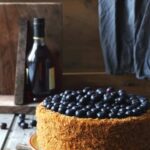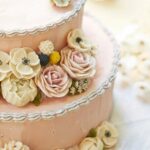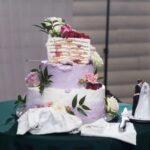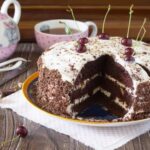Are you looking for a creative and enjoyable activity to try out? If so, learning how to decorate a fake cake might be just the thing for you. This unique form of art allows you to let your imagination run wild while creating stunning confections that look good enough to eat. In this article, we will explore the concept of decorating a fake cake and provide you with all the tips and techniques you need to create your own masterpiece.
Choosing the right fake cake is essential in ensuring the success of your decorating project. With our helpful tips on selecting the perfect fake cake base, including size, shape, and material, you’ll be well on your way to creating a beautiful work of art. We’ll also guide you through preparing the cake surface and selecting the decorative elements, such as fondant, icing, sprinkles, and edible pearls.
Furthermore, we’ll provide detailed instructions on various techniques for adding detail to your fake cake, including piping, sculpting, and painting. From color blending to texture, we’ve got all the advice you need to make sure your decorations look as realistic as possible. Plus, we’ll offer suggestions for finishing touches that will bring your creation together seamlessly. So get ready to unleash your creativity and learn how to decorate a fake cake like a pro.
Choosing the Right Fake Cake
When it comes to decorating a fake cake, selecting the right base is crucial for a successful project. There are several factors to consider when choosing a fake cake, including size, shape, and material. The first step is to determine the purpose of your decorated fake cake – whether it’s for display, photography, or as a prop for an event.
Size is an important consideration when choosing a fake cake base. If the cake is meant for display in a small space, such as on a shelf or in a cabinet, then opting for a smaller-sized fake cake would be ideal. On the other hand, if the cake is intended to be showcased at an event or in large open spaces, then a larger-sized fake cake may be more suitable.
In addition to size, shape also plays a significant role in selecting the right fake cake base. Whether you want a round, square, or rectangular shape will depend on your decorative vision and where the final product will be displayed. Finally, the material of the fake cake should also be considered.
Some options include foam, plastic, and resin-based materials. Foam cakes are lightweight and easy to work with but may be less durable compared to plastic or resin-based cakes.
| Factor | Consideration |
|---|---|
| Size | Determine purpose of cake; small versus large space |
| Shape | Decorative vision; display location |
| Material | Foam (lightweight), plastic (durable), resin-based (sturdy) |
Preparing the Cake Surface
When it comes to decorating a fake cake, proper preparation is key to achieving a professional-looking result. Before you can begin adding beautiful decorations and details, you’ll need to ensure that the surface of the fake cake is clean and free of any imperfections. This section will provide you with step-by-step instructions on how to properly prep your fake cake for decorating.
Cleaning the Fake Cake
The first step in preparing the fake cake surface is to thoroughly clean it. Use a damp cloth or sponge to gently wipe away any dust, dirt, or debris that may have accumulated on the cake. Take care not to press too hard, as some fake cakes can be delicate and easily damaged.
Smoothing Out Imperfections
After cleaning the fake cake, carefully inspect the surface for any imperfections such as dents, cracks, or rough edges. Depending on the material of your fake cake, there are different methods for smoothing out these imperfections.
For foam-based cakes, gentle sanding with fine-grit sandpaper can help smooth out any rough spots. If your fake cake is made of plastic or resin, consider using a small amount of modeling clay to fill in any cracks or gaps before smoothing it out with sandpaper.
By taking the time to properly clean and smooth out any imperfections on your fake cake, you’ll create a perfect canvas for adding decorative elements and ensure that your finished product looks polished and professional.
Selecting the Decorative Elements
When it comes to decorating a fake cake, choosing the right decorative elements is crucial in achieving a realistic and visually appealing design. Here are some ideas and inspiration for selecting the perfect materials and decorations to bring your fake cake to life:
- Fondant: Fondant is a versatile and popular choice for decorating fake cakes. It can be molded and shaped to create intricate designs, and it comes in a variety of colors, making it easy to customize the look of your cake.
- Icing: Just like with real cakes, icing can be used to add texture and dimension to your fake cake. Whether you opt for buttercream or royal icing, consider different piping techniques to create unique patterns and designs.
- Sprinkles: Sprinkles are a simple yet effective way to add color and visual interest to your fake cake. You can use them sparingly for a subtle touch of whimsy or cover the entire surface for a festive look.
- Edible Pearls: Edible pearls are an elegant choice for adding a touch of sophistication to your fake cake design. You can strategically place them around the perimeter of each tier or use them as accents on specific areas of the cake.
These are just a few examples of decorative elements that you can incorporate into your fake cake decorating project. Feel free to mix and match different materials and decorations to achieve the desired look for your creation. Remember that the key is to have fun and let your creativity flow as you experiment with various options.
Whether you’re going for a classic, whimsical, or avant-garde style, the decorative elements you choose will play a significant role in bringing your fake cake design to life. Take the time to explore different options, gather inspiration from various sources, and don’t be afraid to think outside the box when it comes to choosing materials and decorations for your decorating project.
Techniques for Adding Detail
Decorating a fake cake is not just about slathering on some icing and calling it a day. It’s an art form that requires attention to detail and creativity. In this section, we will delve into the various techniques for adding detail to a fake cake, including piping, sculpting, and painting.
One of the most common techniques for adding detail to a fake cake is piping. Piping involves using a pastry bag to squeeze out decorative elements such as icing, frosting, or whipped cream onto the surface of the cake. This technique can create intricate designs and patterns, adding depth and texture to the overall look of the fake cake.
Sculpting is another important technique when it comes to decorating a fake cake. Sculpting involves shaping fondant or gum paste into three-dimensional elements such as flowers, figurines, or other intricate designs. With sculpting, you can add unique and personalized touches to your fake cake, making it truly one-of-a-kind.
Lastly, painting is a technique that can elevate the look of a fake cake. Using edible food coloring or food-safe paint, you can add vibrant colors and fine details to your decorations. Whether it’s adding a touch of gold or creating realistic textures, painting can take your fake cake decorations to the next level. Overall, these techniques for adding detail are essential in creating a visually stunning and realistic decorated fake cake.
Tips for Realistic Looking Decorations
When decorating a fake cake, the goal is to make it look as realistic as possible despite being inedible. Achieving lifelike decorations on a fake cake requires some skill and attention to detail. Here are some tips for making the fake cake decorations look as realistic as possible:
- Color Blending: One of the keys to creating realistic-looking decorations on a fake cake is mastering the art of color blending. Whether you’re working with fondant, icing, or other decorative materials, seamlessly blending colors together can create depth and dimension, mimicking the appearance of real frosting or fondant.
- Texture: Adding texture to your fake cake decorations can also enhance their realistic appearance. For example, using textured rolling pins or impression mats can give fondant decorations a more authentic look by mimicking the texture of real frosting. Paying attention to details like texture can take your fake cake decorations to the next level.
- Reference Images: If you’re aiming for realism in your fake cake decorations, referring to images of real cakes can be incredibly helpful. Studying the way that real frosting and decorative elements appear on edible cakes can provide valuable insights into creating lifelike replicas with your fake cake.
By paying attention to color blending, texture, and using reference images for inspiration, you can elevate the realism of your fake cake decorations and create an eye-catching centerpiece that looks good enough to eat (even though it’s not). These tips will help you take your faux baking skills to the next level and impress guests with your lifelike creations.
Finishing Touches
When it comes to decorating a fake cake, the finishing touches can really make a difference in bringing the whole creation together. Adding elements like edible glitter, ribbon, or edible flowers can elevate the look of the fake cake and make it appear even more realistic.
Edible glitter is a popular choice for adding sparkle and shine to the decorative elements of the cake, while ribbon can be used to create a polished and elegant look. Additionally, incorporating edible flowers adds a touch of natural beauty to the fake cake.
When choosing edible glitter for your fake cake, consider the color scheme and overall theme of your design. Edible glitter comes in various colors and sizes, so select ones that complement the rest of your decorations. To apply edible glitter, use a small paintbrush or sprinkle it lightly over the desired areas.
As for using ribbon, opt for high-quality satin or organza ribbon that coordinates with your chosen color palette. Secure the ribbon around the base or tiers of your fake cake using non-toxic glue or double-sided tape.
For adding edible flowers as final touches to your decorated fake cake, select blooms that are safe for consumption and free from pesticides. Popular choices include roses, violets, pansies, and orchids. Gently wash and dry the flowers before placing them on the cake surface. Edible flowers not only enhance the visual appeal of the fake cake but also add a delightful aroma to the presentation.
| Finishing Touch | Description |
|---|---|
| Edible Glitter | Adds sparkle and shine; comes in various colors and sizes. |
| Ribbon | Creates a polished and elegant look; choose high-quality satin or organza. |
| Edible Flowers | Adds natural beauty; select safe-to-eat blooms like roses or violets. |
Displaying and Preserving the Decorated Fake Cake
When it comes to displaying your beautifully decorated fake cake, there are a few key things to consider. You want to showcase your creation in a way that highlights all of the hard work you put into decorating it.
One popular option is to use a cake stand or pedestal to elevate the fake cake and draw attention to its intricate details. Another idea is to place the fake cake under a glass dome or cloche to protect it from dust and debris while still allowing it to be seen.
Preserving the Decorated Fake Cake
To ensure that your decorated fake cake stays looking fresh for as long as possible, it’s important to take some steps to preserve it. If your fake cake includes any perishable decorations such as edible flowers or fruits, be sure to replace them with artificial versions to avoid any deterioration over time. Additionally, keep the fake cake away from direct sunlight and excessive heat, as this could cause the materials used in the decorations to fade or degrade.
Storing the Decorated Fake Cake
If you need to store your decorated fake cake for an extended period of time, consider investing in a clear, airtight display case. This will help protect the cake from dust and moisture while still allowing it to be showcased.
Alternatively, if space allows, you can also opt to display the decorated fake cake inside a glass cabinet or on a high shelf out of reach of curious hands or paws. Remember that proper storage and display can greatly extend the lifespan of your beautiful creation.
Conclusion
In conclusion, decorating a fake cake can be an enjoyable and creative activity for both beginners and experienced decorators. By following the tips and techniques outlined in this article, anyone can create a stunning fake cake that looks just as beautiful as the real thing. From selecting the right base to adding realistic details and finishing touches, there are plenty of opportunities to let your imagination and artistic skills shine.
Choosing the perfect fake cake base is essential for a successful decorating project. Whether you opt for a foam or styrofoam base, selecting the right size and shape is crucial. Preparing the cake surface by cleaning and smoothing out any imperfections sets the foundation for flawless decoration. Selecting the right materials and decorative elements can truly elevate the fake cake, so don’t be afraid to experiment with different textures, colors, and designs.
Ultimately, fake cake decorating is a wonderful way to explore your artistic abilities without the time constraints or stress that often come with real baking. With proper care and maintenance, your decorated fake cake can continue to be showcased as a beautiful piece of art in your home or at events. So why not give it a try? The possibilities are endless when it comes to creating stunning faux confections.
Frequently Asked Questions
What Is the Best Frosting for Fake Cakes?
The best frosting for fake cakes is typically royal icing or fondant. Royal icing is a hard, smooth icing that dries to a firm consistency, making it ideal for creating a flawless finish on fake cakes. Fondant, on the other hand, can be rolled out and draped over dummy cakes to create a clean, polished look.
Can You Put a Real Cake on Top of a Dummy Cake?
Yes, you can definitely put a real cake on top of a dummy cake. This is often done in the cake decorating world to create impressive multi-tiered cakes without all the layers being edible. The dummy cake provides structural support while the real cake can be sliced and served.
How Do You Cover a Dummy Cake With Buttercream?
To cover a dummy cake with buttercream, start by applying a thin layer of buttercream to the cake using an offset spatula. Smooth out the buttercream as much as possible, paying special attention to any crevices or details in the dummy cake’s design.
Once the entire surface is covered, use a bench scraper or smoother to achieve a perfectly even and smooth finish before adding any additional decorations or designs.

Welcome to my blog about home and family. This blog is a place where I will share my thoughts, ideas, and experiences related to these important topics. I am a stay-at-home mom with two young children. I hope you enjoy reading it! and may find some helpful tips and ideas that will make your home and family life even better!





